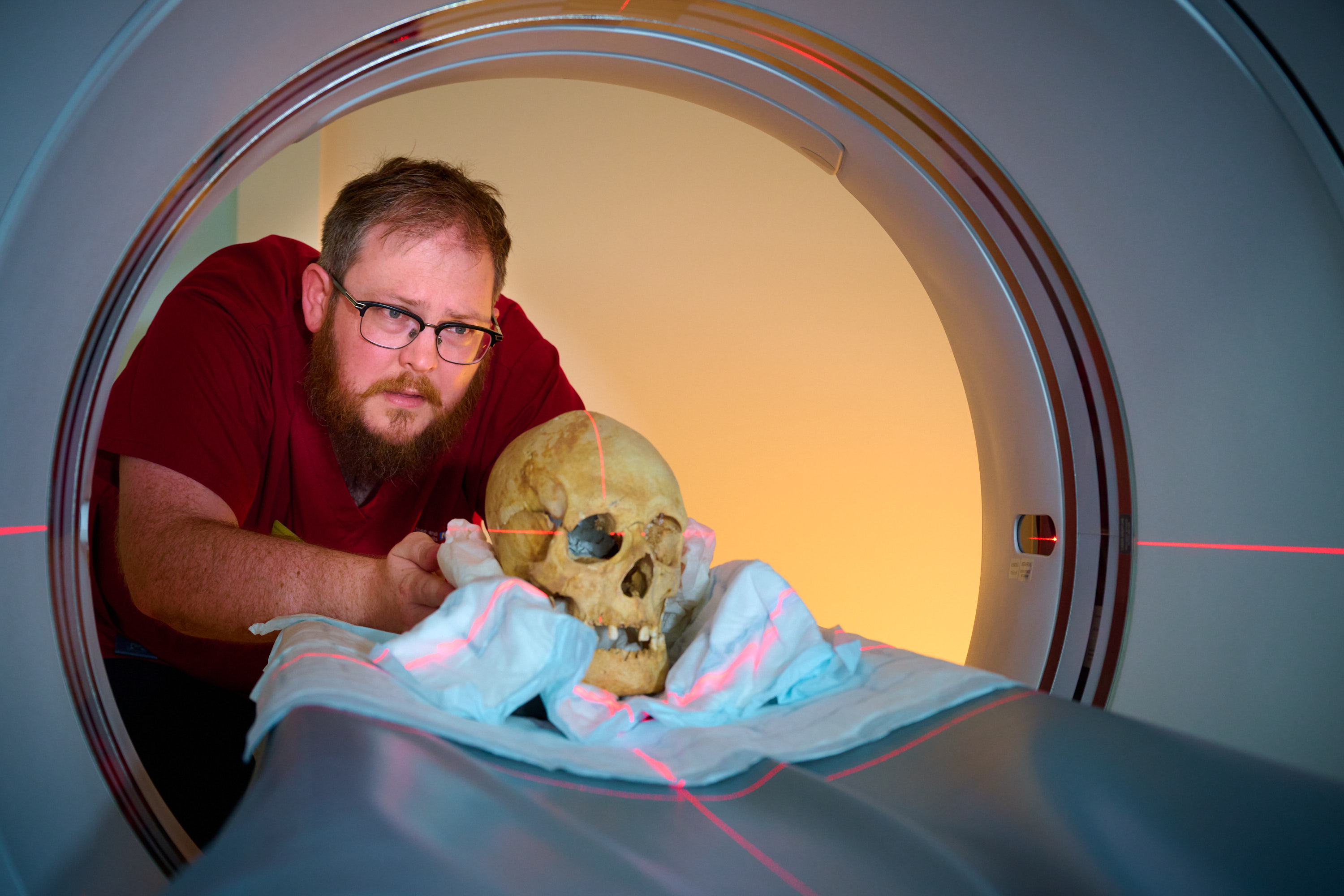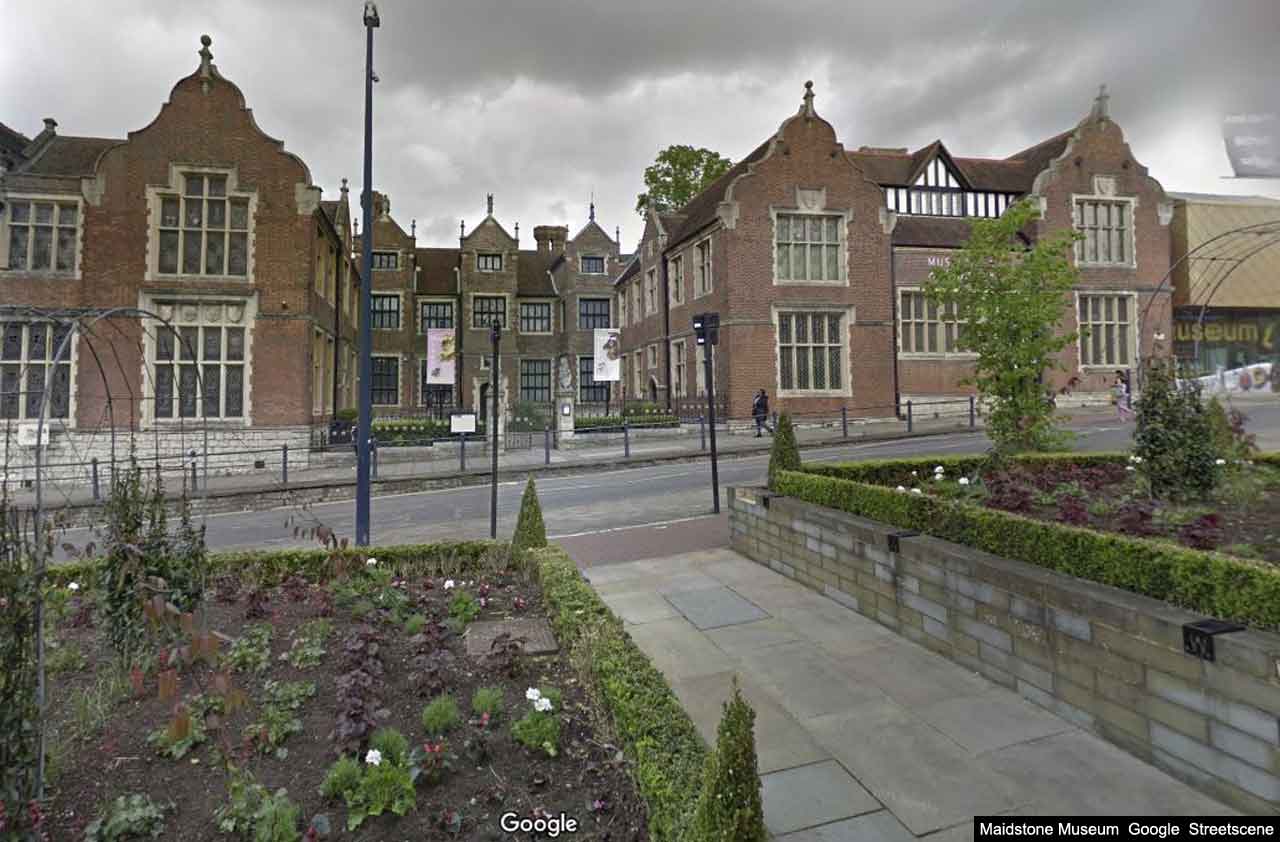Maidstone Museum is investigating a skull reputedly found at a local prehistoric site, to uncover more information about the person.

The story of how and why this research is being undertaken and the results that emerge will be included in the museum’s exciting new archaeology gallery, ‘Lives In Our Landscape’, due to open in early summer next year.
As part of the investigations, the skull was CT-scanned at Maidstone Hospital after patient hours had closed in the Nuclear Medicine department. The medical team gave their time voluntarily.
Maidstone Borough Council (MBC) own and run the Maidstone Museums which includes Maidstone Carriage Museum. Cllr Claudine Russell, Cabinet Member for Communities, Leisure and Arts at MBC said:
“I am really intrigued to find out what this person may have looked like and when they lived. We are really grateful to Maidstone and Tunbridge Wells NHS Trust for their help with this exciting project.
“Maidstone Museum looks forward to welcoming visitors to the new gallery ‘Lives In Our Landscape’, to discover more”
Samantha Harris, Collections Manager at Maidstone Museum, has had previous experience of scanning through her work with the Egyptian mummies at the museum. Samantha said:
“The scanning of this skull in partnership with MTW NHS Trust is a great opportunity, using non-destructive techniques, to learn more about the individual when they were alive. Using the scans in conjunction with other scientific testing we hope to bring them to life, thousands of years after their death.”
The skull moved slowly through the scanner, which recorded the surface at very high resolution. The data will be used by FaceLab, at Liverpool John Moores University, to recreate the appearance of this person. Visitors to the new gallery will be able to look into the face of someone who lived perhaps around 6000 years ago.
James Elliot, Senior Lecturer in Diagnostic Radiography at Canterbury Christ Church University and a forensics and archaeological imaging expert, said:
“CT scans are an excellent tool to create a digital record of the deceased, providing an assessment of health as well as appearance. Of interest was the identification of a bone lesion (tumour) within the frontal bone of the skull, showing as a rounded area of different texture to surrounding bone. The exact diagnosis is still unclear, with suggestions of an origin due to cancer or merely a benign growth. The lesion does not protrude from the skull and is not visible by eye, highlighting the value of the CT scan.”
For more information about Maidstone Museum visit: https://museum.maidstone.gov.uk/
Sign up to Maidstone Borough Council e-newsletters ‘Stay Connected’ to receive vital news and updates via email for the many services and events provided by the Council https://maidstone.gov.uk/StayConnected
